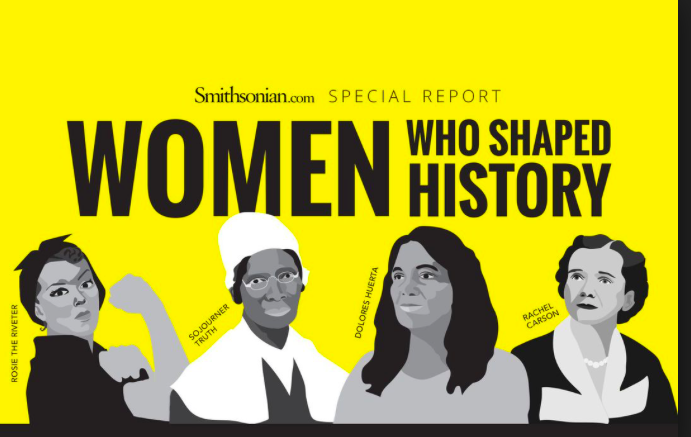Land Surveyors in the Edo Period by Katsushika Hokusai.

Topics on the Page
Japanese Isolationism
The Edo Period
Commodore Perry and the Opening of Japan (1853-1854)
- The Black Ships
- The Black Ship Scroll
- The Treaty of Kanagawa
Focus Question: What were the influences and consequences of Japanese isolationism in 1800?
Japanese isolationism was influenced by the leaders of the Japanese government enforcing the policy
called sakoku, which meant "closed country."
o Shoguns were military kings, who ruled under the emperors of Japan.
o Emperors were believed to be descendants of the gods.
o Daimyo were local governors, backed up by dedicated soldiers, or samurai
This time period is known as the "Edo Period"
- While the official capital city during this period remained Kyoto, Edo (today known as Tokyo) rose to be the actual seat of power in this time.
- While Japan had historically been a fairly isolated island nation segmented by various factions, the unification of Japan occurred at nearly the same time as the arrival of Europeans in the early 16th century.
- Around this time Japan opened its ports for trade with powers, but the cultural exchange proved too potent for Japanese leaders.
- In the year 1587, Toyotomi Hideyoshi issued an edict prohibiting Christian activities declaring that Japan was ‘the land of the Gods,’ and the destruction of shrines by the foreigners was “something unheard of in previous ages” (Duiker & Spielvogel, 2005, p. 353). By 1612, another edict ordered all missionaries out of Japan for good.
Nevertheless, the Tokugawa shogunate of Japan, which ruled from (1603-1867), enforced a policy called sakoku, or closed country, prohibiting all foreign contact with anyone except Korea, China, Taiwan, and the Dutch Republic from 1641 to 1853.
- Japan was closed to all European nations, except the Dutch, who had established a trading post there.
- Even though Japan had isolated itself from the rest the world during this period, Japan thrived through new tools of manufacturing and the population growth of its major cities. For example, by the 1750s Edo (Tokyo) had a population of over one million making it one of the largest cities in the world (Duiker & Spielvogel, 2005, p. 355).
Many different Japanese customs were brought into life during the isolation including poetry, Noh theater, and the tea ceremony. A lasting peaceful period was a result of the isolation.
The Great Wave off Kanagawa (one of the most famous images in Japanese art)

- Even though Japan remained relatively isolated, Japanese literature, writing, and poetry saw great development and advancement in the Heian period (794-1185 AD).
 What role did women serve during this time?
What role did women serve during this time?
- The Edo period (1615-1868) was also a great time of internal development for Japan. The outcome of having limited contact with other nations was the nurturing of many traditional Japanese arts and practices.
- These practices included poetry writing, Noh theater, and tea ceremonies. During this time, poetry flourished, kabuki theater was first performed, and playwrights for all theater forms were in high demand, including those for bunraku (Japanese puppet theater.)
- For More on the art of this period including a gallery, follow this link the Metropolitan Museum of Art here and for a video detailing the art click here
- Scholars even studied and theorized on earlier Japanese literature. Since this was a period of peace, samurai, instead of fighting each other, dedicated their time to learning tea ceremony, martial arts, and literature. Many of these Japanese traditional customs are still practiced today.
- The Edo period was also characterized by Confucian conservatism, balanced by the establishment of “pleasure quarters” in major cities, where theaters, artists, prostitutes, and others were allowed to entertain patrons. The social philosophy also included strict hierarchy in government and society.
- Japanese weddings during this time period also began to take shape and became very elaborate ceremonies. Upon the engagement, work began on assembling elaborate trousseaus for the bride. The wealthier the family of the groom, the more elaborate the trousseau was. The daughter's of Shoguns marrying a Daimyo could receive a trousseau consisting of over 400 pieces including furniture, kimonos, books, art utensils, mirrors, writing boxes, incenses, musical instruments, dolls and more. These items were then considered family heirlooms and passed down to future generations.
Here is a short documentary from UNESCO about kabuki theater.
See Special Topic page on Haiku Poetry
Commodore Matthew C. Perry and the Opening of Japan (1853-1854)

Attempts by the United States and other nations to establish formal relations with Japan were repeatedly rebuffed.
In response to this situation, in March 1852, President Millard Fillmore ordered Matthew C. Perry to command the U.S. Navy's East India Squadron and to establish diplomatic relations with Japan.
Perry initially delivered President Fillmore's request for a treaty to a representative of the Japanese emperor in July 1853. Perry returned with a larger force in 1854, arriving in Edo (Tokyo) Bay.
 Perry obtained the signature of Japanese authorities to the Treaty of Kanagawa on 31 March 1854.
Perry obtained the signature of Japanese authorities to the Treaty of Kanagawa on 31 March 1854.
Commodore Matthew Perry

- As a result of this treaty of permanent friendship, a U.S. consul was stationed at Shimoda, U.S. vessels were allowed access to the ports of Shimoda and Hakodate to obtain provisions, and shipwrecked seamen from U.S. vessels were to receive the assistance of Japanese authorities.
- This treaty led to significant commercial trade between the United States and Japan, contributed to opening Japan to other Western nations, and ultimately resulted in the modernization of the Japanese state.
 Questions to consider: How did Japan feel about the Treaty of Kanagawa? Could built up tensions led to the attack on Pearl Harbor?
Questions to consider: How did Japan feel about the Treaty of Kanagawa? Could built up tensions led to the attack on Pearl Harbor?
For more, see Black Ships and Samurai to see how Japanese artists visualized the arrival and impact of Perry's fleet.
Commodore Perry and Japan
Prelude and explanation of Meiji Restoration, after Commodore Perry's visit.
If you are interested in women's history in Japan, please check out this essay discussing the changing role of women in Japanese society.
- Women also received some samurai self defense training
- A detailed overview of what life was like for Japanese women during this period can be found here
PBS also provided a episode in its series Empires called Japan: Memoirs of a Secret Empire which has been posted on Youtube. Check the Links below:
Part I: http://www.youtube.com/watch?v=RQlxcz9U2x0
Part II: http://www.youtube.com/watch?v=D3V5gVLPEvI&feature=channel
Part III: http://www.youtube.com/watch?v=WOGyzGWW7j4&feature=channel
Part IV: http://www.youtube.com/watch?v=hRrDg0uDJWQ&feature=channel
Part V: http://www.youtube.com/watch?v=aPMZ4suRSjY&feature=channel
Part VI: http://www.youtube.com/watch?v=4vHvmAVSyUI&feature=channel
Sources
[1] Virtual tour of Edo Japan http://www.us-japan.org/edomatsu/
[2] Link for Sakoku: http://www.pitt.edu/~annj/courses/sakoku.html
[3] Traditional practices http://www.metmuseum.org/toah/ht/09/eaj/ht09eaj.htm
[4] Japanese history, the Edo period 1603-1867 http://www.japan-guide.com/e/e641.html
[5] Mayer, Eric (2007). History of Japan. Retrieved March 24, 2007, from emayzine.com Web site: http://www.emayzine.com/lectures/JAP1600-1860.html
[6] Timline of Japan's empires http://www.pbs.org/empires/japan/enteredo.html
[7] Major events in Japan 1522-1645 http://www.artsales.com/ARTistory/Hosokawa/European_Timeline.html
[8}Toyotomi Hideyoshi. Retrieved February 19, 2010 from Wikipedia:http://en.wikipedia.org/wiki/Toyotomi_Hideyoshi
[9] Friedmen, Seth. "Women in Japanese Society: Their Changing Roles." Retrieved February 19, 2010: http://www2.gol.com/users/friedman/writings/p1.html
[10] Japan: Memoirs of an Empire. Retrieved February 19, 2010;http://www.pbs.org/empires/japan/
[11] Videos from Youtube: Japan: Memoirs of an Empire. Retrieved February 19, 2010.
[12} https://www.history.navy.mil/research/library/exhibits/commodore-matthew-c-perry-and-the-opening-of-japan.html
Comments (0)
You don't have permission to comment on this page.